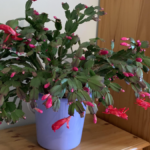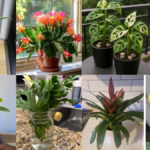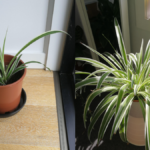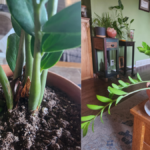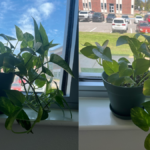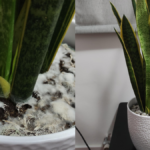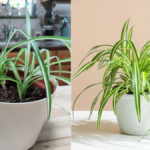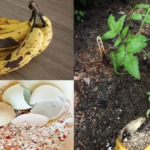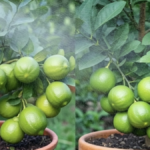How to Take Care of Sensitive Plant – Sensitive plant care is all about giving the right sunlight, water, and warm climate. The plant is popular because of its unique habit—its leaves close instantly when touched, at night, or when shaken. This magical movement makes it very attractive for kids and gardening lovers. To grow it well, you need to take care of watering, soil, sunlight, fertilizer, and temperature.
I have grown sensitive plants in my home garden since childhood. Even today, it is one of my favorite plants because of its playful nature. From my experience, the plant looks delicate, but if you provide the right environment, it grows healthy and blooms with pink, fluffy flowers. Let’s see in detail how to care for this wonderful plant.
IN THIS ARTICLE
About Sensitive Plant (Mimosa pudica)
Sensitive plant, scientifically called Mimosa pudica, is a tropical perennial herb originally from South America but now grown in India and many other parts of the world. In local language, it is also called “Touch-me-not” because of its quick leaf-folding action.
It belongs to the pea family (Fabaceae) and is mostly grown as an ornamental plant. Apart from being a fun plant to watch, it also has some traditional medicinal uses in Ayurveda.
Here’s a quick overview:
| Feature | Details |
|---|---|
| Scientific Name | Mimosa pudica |
| Common Names | Sensitive Plant, Touch-me-not |
| Plant Type | Perennial in tropics, annual in colder regions |
| Height | 1–1.5 feet |
| Special Feature | Leaves close on touch or at night |
| Flowers | Small, pink, ball-shaped |
| Best Season | Summer and rainy season |
| Uses | Ornamental, traditional medicinal uses |
Quick Tips to How to Take Care of Sensitive Plant
- Soil: Loose, sandy, and well-draining soil.
- Watering: Keep soil moist but never waterlogged.
- Sunlight: 4–6 hours of direct sunlight is best.
- Temperature: Warm climate (20–30°C) is ideal.
- Humidity: Moderate to high humidity preferred.
- Fertilizer: Light liquid fertilizer once every month.
- Propagation: Easily grown from seeds.
- Pot Size: Medium pot with drainage holes.
Watering Sensitive Plant
Watering is the most important part of sensitive plant care.
- Sensitive plant likes moist soil at all times.
- Water when the topsoil feels dry to touch.
- In summer, you may need to water daily, but in winter, reduce the frequency.
- Avoid overwatering because it can cause root rot.
- Always use a pot with drainage holes to let excess water escape.
- For outdoor plants in the ground, water 2–3 times a week depending on rainfall.
My tip: In very hot days, I keep a mulch layer of dry leaves on top of the soil. It keeps the moisture longer.
Best Soil for Sensitive Plant
Soil decides how strong and healthy your plant will grow.
- Sensitive plant grows best in loose, sandy, and well-draining soil.
- A good potting mix is: 2 parts garden soil + 1 part sand + 1 part compost.
- Adding compost gives nutrients and sand ensures water does not stay for long.
- Avoid using only clay or heavy soil—it will hold water and harm the roots.
If you are growing in a pot, keep a small layer of pebbles at the bottom for better drainage.
Sunlight Requirement
- Sensitive plant loves bright sunlight.
- Keep it in a place where it gets 4–6 hours of direct sunlight daily.
- If growing indoors, place it near a south-facing window.
- Too much shade will make the plant weak and leggy, and leaves may stop folding properly.
- In extremely hot regions, protect from harsh afternoon sun.
From my experience, morning sun is the best for this plant—it keeps it fresh and helps in flowering.
Humidity & Temperature
- Sensitive plant grows naturally in warm and humid climates.
- Best temperature range: 20–30°C.
- It cannot survive frost or very cold weather.
- If you live in a colder place, grow it in pots so you can move it indoors in winter.
- Humidity helps the plant stay green and healthy, so occasionally misting the leaves in dry weather is good.
Fertilizing Sensitive Plant
The plant does not need very heavy feeding but giving some nutrition helps it stay healthy.
- Use a balanced liquid fertilizer (like NPK 10-10-10) once a month.
- You can also add homemade compost tea or diluted cow dung liquid.
- Avoid over-fertilizing, as sensitive plants are delicate and may get leaf burn.
- During flowering season, a mild phosphorus-rich fertilizer helps more blooms.
My tip: I usually give a handful of compost every 30–40 days, and it grows very well without any chemical fertilizers.
Propagation of Sensitive Plant
Sensitive plant is most commonly grown from seeds.
Steps to grow from seeds:
- Collect dried seed pods from the plant.
- Soak the seeds in warm water for 10–12 hours.
- Sow the seeds in moist soil, 1 cm deep.
- Keep the pot in a warm, sunny place.
- Mist lightly with water to keep soil moist.
- Seeds germinate in 7–14 days.
Propagation from cuttings is less common because the plant grows very quickly from seeds.
Common Problems and Solutions
| Problem | Cause | Solution |
|---|---|---|
| Yellow leaves | Overwatering or poor soil drainage | Reduce watering, use sandy soil |
| Drooping plant | Lack of sunlight | Shift to bright sunny spot |
| No leaf movement | Too much touching or plant stress | Avoid frequent touching, let plant rest |
| Weak growth | Poor soil nutrients | Add compost or mild fertilizer |
| Plant dying in winter | Cold weather or frost | Shift indoors, keep warm |
Additional Care Tips
- Do not touch the leaves too often—frequent touching makes the plant weak.
- Protect from strong winds; the plant has delicate stems.
- Sensitive plant can spread quickly in the garden; trim if needed.
- It is slightly thorny, so be careful while handling.
- Grows well as a decorative plant in pots or small garden spaces.
Conclusion
Growing a sensitive plant (Mimosa pudica) is a joyful experience. With its unique leaf-folding nature and pink flowers, it brings charm to any garden. From my gardening journey, I’ve learned that this plant is delicate but not difficult—just provide sunlight, moist soil, and warm weather, and it will grow beautifully. It is also one of the best plants to introduce kids to gardening because of its magical response to touch.
How to Take Care Bird of Paradise Plant 2025 | Indoor and Outdoor

